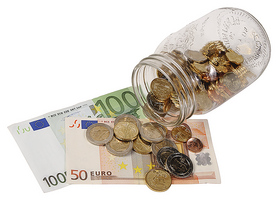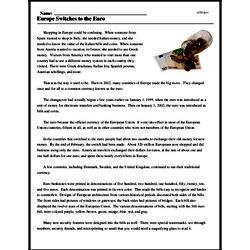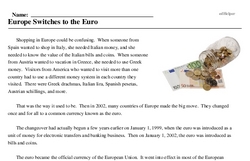Europe Switches to the Euro
Shopping in Europe could be confusing. When someone from Spain wanted to shop in Italy, she needed Italian money, and she needed to know the value of the Italian bills and coins. When someone from Austria wanted to vacation in Greece, she needed to use Greek money. Visitors from America who wanted to visit more than one country had to use a different money system in each country they visited. There were Greek drachmas, Italian lira, Spanish pesetas, Austrian schillings, and more.
That was the way it used to be. Then in 2002, many countries of Europe made the big move. They changed once and for all to a common currency known as the euro.
The changeover had actually begun a few years earlier on January 1, 1999, when the euro was introduced as a unit of money for electronic transfers and banking business. Then on January 1, 2002, the euro was introduced as bills and coins.
The euro became the official currency of the European Union. It went into effect in most of the European Union countries, fifteen in all, as well as in other countries who were not members of the European Union.




